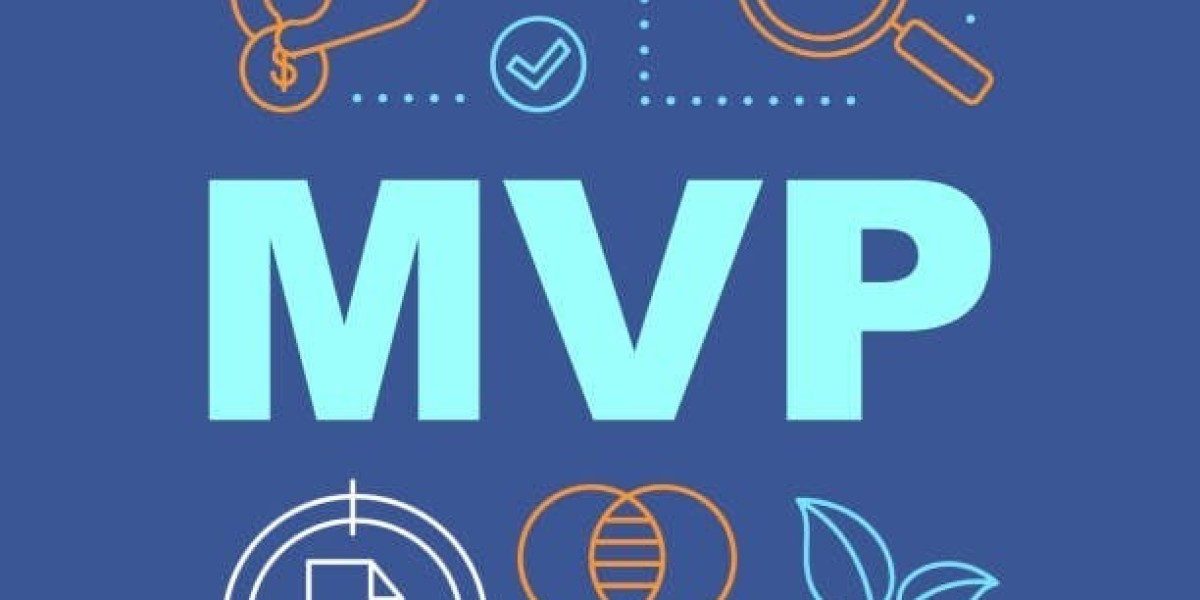In the competitive world of startups and product development, one of the most critical concepts is Minimum Viable Product (MVP) development. The term MVP has become a buzzword, but understanding its significance and practical application is essential for entrepreneurs, product managers, and development teams. MVP development is the first step in bringing a new product to life, allowing startups to test their ideas with real users before committing significant resources.
What is MVP Development?
MVP development refers to the process of building a version of your product that includes only the core features necessary to solve the problem you're targeting. This version, known as the Minimum Viable Product, is not about building a fully polished, feature-rich product. Instead, it focuses on delivering enough functionality to allow early users to interact with the product, provide feedback, and validate your idea.
The primary goal of MVP development is to test assumptions about your product's value in the real world with minimal investment. For startups, this approach reduces the risk of building a product that fails to meet market needs.
Why is MVP Development Important?
For startups, MVP development serves as a strategic tool to validate your business idea before going all in with full-scale product development. Traditional product development methods can be time-consuming and costly, making it risky to invest heavily in a product that may not resonate with your target audience. By starting with an MVP, you can quickly assess whether your product idea has traction and whether customers find it valuable.
MVP development also facilitates iterative improvement. By gathering feedback from early adopters, you can refine the product, fix issues, and add features that will better meet user needs. In many ways, MVP development acts as a proof of concept that helps shape the direction of the final product.
MVP for Startups: A Lean Approach.
When launching a startup, resources are typically limited, and the pressure to validate ideas quickly is immense. MVP for startups offers a lean approach to product development, allowing founders to focus on building only the essential features that differentiate their product in the market.
Rather than building a fully featured, complex solution, MVP for startups encourages focusing on the problem your product aims to solve and how to solve it effectively. This minimal approach helps startups avoid spending valuable time and money on unnecessary features. It enables entrepreneurs to:
- Test Market Demand: Determine whether people are interested in your product before investing too much time and money.
- Improve Customer Engagement: Engage with your users early and gather feedback to make data-driven decisions.
- Minimize Risk: Validate the feasibility of your idea and reduce the likelihood of failure by adjusting based on real user insights.
A common misconception is that an MVP needs to be perfect. In reality, MVP development prioritizes learning and iteration over perfection. The first version of your product doesn't need to be feature-complete; it simply needs to fulfill the core problem that your users are facing.
The Key Elements of MVP Development
Effective MVP development involves focusing on the following essential elements:
1. Core Functionality
The first step in MVP development is identifying the core functionality of your product. This is the minimal set of features that solves the problem for your users. In MVP software solutions, this typically means stripping down complex features, leaving only the most critical capabilities.
2. Target Audience
Understanding your target audience is crucial when developing an MVP. Your product should cater to the needs of a specific segment of users who will benefit most from your solution. Conducting market research and developing user personas can help ensure your MVP development aligns with the needs of the right people.
3. User Feedback
A central tenet of MVP development is the feedback loop. After launching the MVP, early adopters will provide valuable insights into what works, what doesn’t, and what they want to see next. Incorporating user feedback will help you make informed decisions and guide the next iterations of your product.
4. Scalability
While an MVP may start small, it’s essential to keep scalability in mind. As your product evolves, it needs to grow and accommodate more users, data, and features. MVP software solutions are often designed with a flexible architecture to ensure future expansion is possible without a complete overhaul.
5. Quick Development
Time is of the essence when it comes to MVP development. The quicker you can launch your MVP, the faster you can begin gathering feedback and refining your product. By focusing on essential features, you can launch your MVP quickly and test the waters with real users.
MVP Software Solutions: Choosing the Right Technology
The technology stack you choose for MVP software solutions plays a pivotal role in the speed and flexibility of your MVP development. The goal is to select tools and technologies that enable rapid development while offering flexibility for future iterations.
Common technologies used in MVP development include:
- Web frameworks like React or Angular for building front-end user interfaces.
- Backend frameworks such as Node.js or Django, which support quick development and scalability.
- Cloud solutions like AWS or Google Cloud for hosting, which offer cost-effective options for handling scalability.
By focusing on the most essential technology components, you can create an MVP that functions well, is easy to scale, and can adapt to future changes without incurring unnecessary costs.
Common Pitfalls in MVP Development
While MVP development can offer a lean, cost-effective approach, it’s not without its challenges. Some common pitfalls include:
- Overcomplicating the MVP: It's easy to add unnecessary features that can delay the launch of your MVP. Remember, less is more. Stay focused on solving the core problem.
- Ignoring User Feedback: Your MVP is only valuable if you use it to gather insights from users. Be sure to listen to early adopters and adapt accordingly.
- Choosing the Wrong Technology: Selecting a technology stack that doesn’t align with your future plans can create roadblocks down the line. Be sure to choose technologies that can scale with your product.
MVP Development Best Practices
To maximize the chances of success in your MVP development process, consider these best practices:
- Define Your Goals: Clearly outline what you hope to achieve with your MVP. Are you testing market demand, validating features, or both? Having well-defined objectives will help you measure success.
- Focus on User Experience: Even though your MVP is a simplified version of your product, it should still provide a seamless and intuitive experience. A good user interface (UI) and user experience (UX) can increase user adoption and retention.
- Iterate Based on Feedback: Be prepared to make changes to your MVP based on the feedback you receive. Iteration is a core aspect of MVP development, and the sooner you start improving, the more successful your product will be in the long run.
- Use Agile Methodology: Agile development is ideal for MVP projects because it promotes quick iterations and flexibility. By breaking the development into smaller, manageable tasks, you can focus on one feature at a time and make improvements based on real-world testing.
The Roadmap from MVP to Full Product
Once your MVP is launched and you’ve gathered feedback, it’s time to move toward developing the full product. The insights you’ve gained from your MVP users will inform your next steps and help you prioritize features and improvements that will drive the product’s long-term success.
Typically, the roadmap from MVP to a full-fledged product involves:
- Validating Assumptions: Review the feedback from your MVP to validate that your initial assumptions were correct.
- Enhancing Features: Add features based on user feedback and needs. Focus on scalability and performance to support a growing user base.
- Polishing UI/UX: While the MVP might have had a simple design, the full product should have a more refined, user-friendly interface.
- Expanding Marketing Efforts: As your product evolves, ramp up your marketing and customer acquisition strategies to target a wider audience.
Conclusion: Build Your MVP Today
MVP development is the key to launching a product quickly and cost-effectively, allowing you to test your idea in the market with real users. By focusing on core functionality, gathering feedback, and iterating based on real-world data, you can reduce risk and increase your chances of building a successful product.
Whether you're a startup founder or a product manager, MVP for startups offers a smart, lean approach to product development. The ability to launch your MVP quickly and validate your ideas is crucial for making informed decisions and securing investment. If you're ready to get started, the next step is clear: Build your MVP today and start testing your product’s potential.
By embracing the MVP mindset, you can turn your ideas into reality faster, more efficiently, and with greater confidence. Don't wait—start building your MVP and move closer to launching a successful product!



